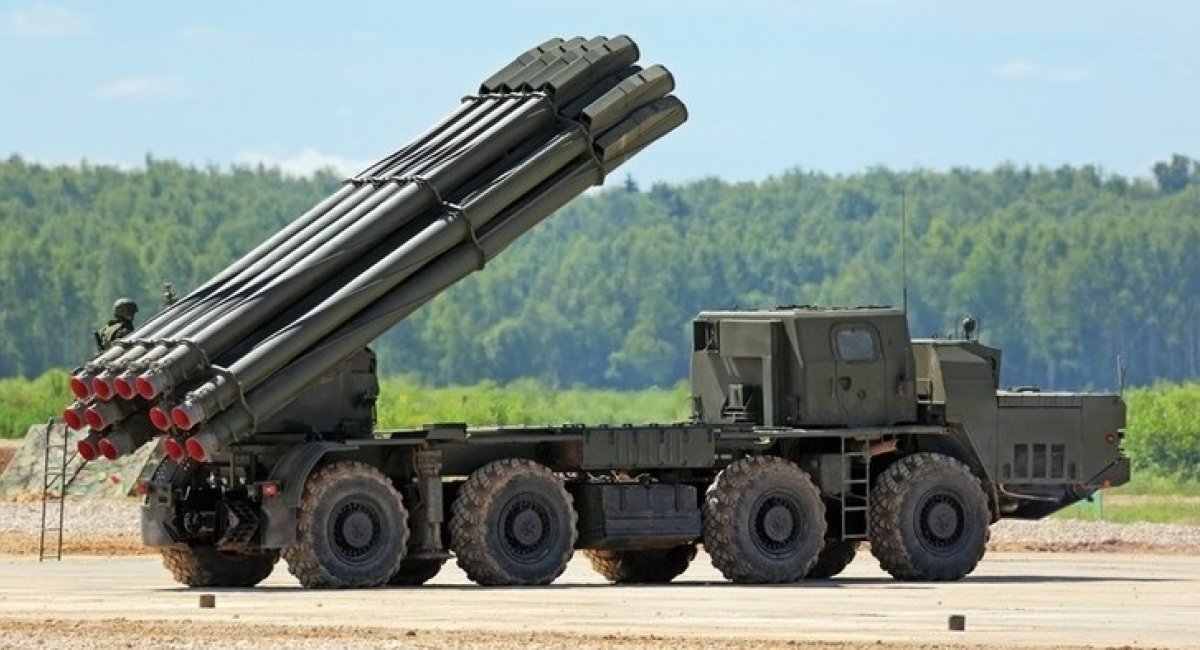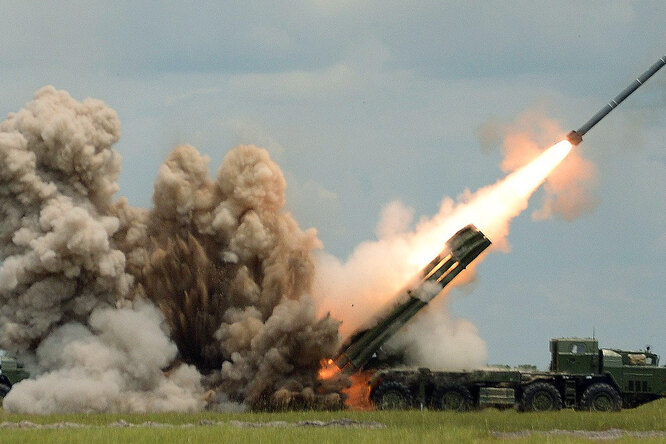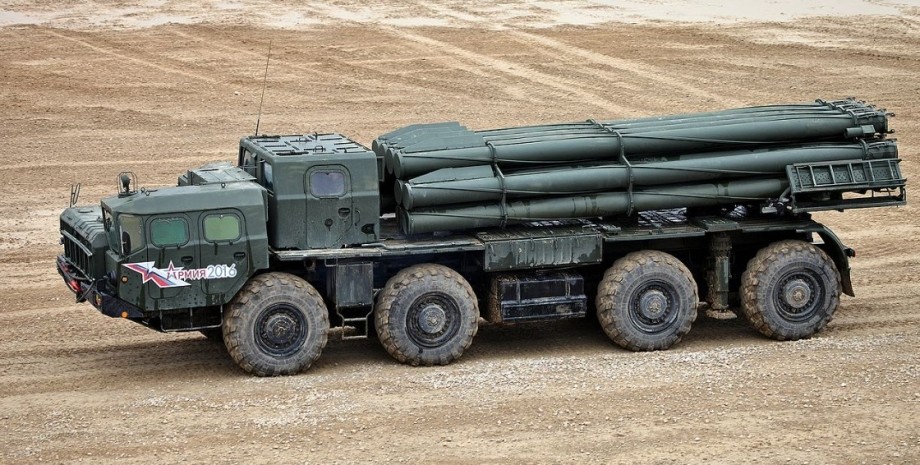
Is the Russian Tornado MLRS a dangerous analog of HIMARS: what is known about the vehicle (photo)
The Russian army is firing at Ukrainian positions with 9K515 Tornado-S multiple launch rocket systems. The weapon is used as an operational and tactical missile system for rear-guard strikes and, if used correctly, turns into a “Russian HIMARS,” military analysts write on the Militarny portal.
The MLRS is significantly superior in terms of combat capabilities to its predecessor, the Soviet Smerch system. The developers assure that 300-mm caliber guided missiles can hit targets at a distance of up to 120 km. A fire control system with a GLONASS navigator in the launcher allows for targeting without a ballistics calculation station.

“The range of guided missiles is over one hundred kilometers. The accuracy of the Tornado-S missiles is 15-20 times higher than that of its predecessor, the Smerch MLRS,” the Rostec military corporation said in a presentation of the MLRS.
The first data on the shelling of Ukraine from Tornado-S MLRS appeared in early March last year, when the occupiers shelled the city of Pokrovsk, Donetsk region. The remains of a 9B706 missile control unit were found at the site of the attack.
The system was tested for the second time in Avdiivka at the end of March 2022. Later, the control units of the Tornado missiles were found in Krasnohorivka, Kryvyi Rih and other Ukrainian cities.
“Tornado-S or HIMARS. Which combat vehicle is better?
The 9K915 Tornado-S MLRS is a rather rare item in the arsenal of the Russian army. Initially, the Russian Armed Forces could have a maximum of 20 such systems, according to Defense Express analysts.
“In November 2022, Rostec Corporation announced the alleged transfer of a batch of new Tornado-C and Tornado-G systems to the Russian army, as well as the transition to three-shift production of such missile systems and guided missiles for them,” the experts emphasized.

According to military expert Pavlo Narozhny , calling the Tornado-S an analog of the American HIMARS is not worth it. The latter is a highly mobile and versatile launcher that can launch many types of missiles.
Russian and Soviet designers followed a different path. For example, the Grad system has one type of missile and a 122-mm caliber guide. The Ugaran, Smerch and Tornado MLRSs have a similar story – the same caliber of 220 and 300 mm.
“American systems do not have calibers, the guides are in a container. The container itself is changed every time it is fired and can contain different types of missiles. HIMARS fires missiles at 40 and 84 kilometers, and ATACMS long-range missiles at 300 and even 600 kilometers in newer modifications,” the expert said.
Another issue is the accuracy of targeting. Russian designers clearly exaggerate this figure in their MLRS, adds Narozhny.
“HIMARS is guided by an inertial guidance system corrected by GPS. If you enter the same coordinates for two missiles and it is a house, the first one will make a hole, and the second one will fly into it and explode inside. Tornado-S has gaps of 15-20 meters because of its different navigation system,” the analyst explains.

